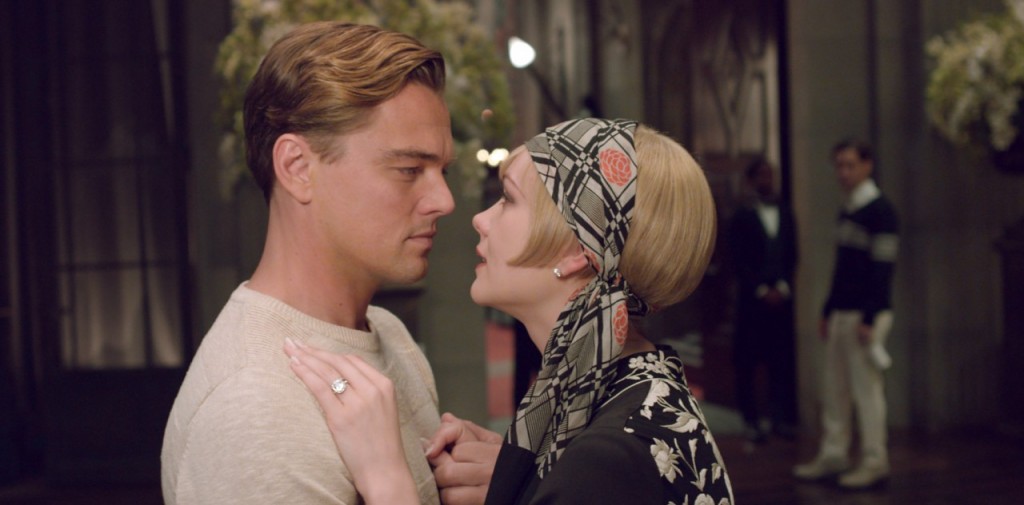On May 10th, American Literature fans across the world gathered to witness the much anticipated film adaptation of, “The Great Gatsby.” The movie, like the five attempts before it, failed to capture what makes the famous novel by, F. Scott Fitzgerald, so successful. With overdone sets and drawn out sequences, “The Great Gatsby” failed to fulfill moviegoers need for a classic film. Despite the films over the top scenery, the movie did contain some perfectly executed scenes, along with a talented cast.
“The Great Gatsby” begins in a psychiatrist’s office, where a depressed, former bonds salesmen, Nick Carraway, is urged to write down the events that took place during his previous summer in the wealthy West Egg of New York City. Carraway, played by Tobey Maguire, moved into a summer home next to an extravagant, yet mysterious, mansion. At first, Carraway remains oblivious to his neighbor, but after witnessing the many parties that flow from the mansion every weekend, Carraway learns that the mansion belongs to the inexplicable Jay Gatsby.
Meanwhile, Nick visits with his doe-eyed cousin, Daisy Buchanan, played by Carey Mulligan, and her hard-faced husband, Tom. In the novels, Daisy is made out to be a self-absorbed and artificial woman, yet the film, by fault of screenplay, fails to exude this behavior. Eventually, Nick is invited to one of Gatsby’s parties, and after a several minutes of the so called “portrayal” of nineteen-twenties life, complete with exaggerated fireworks and fashions, Nick finally meets Gatsby.
The highlights of the film is the Leonardo DiCaprio’s performance as the character of Jay Gatsby. DiCaprio captures the mystery that is Gatsby with his easy-faced banter and sly smiles as he calls every character “old sport.” Nick soon learns of Gatsby’s so called past, and of his love for Nick’s cousin, Daisy.
And thus begins the epic romance of Daisy and Gatsby. One of the most enjoyable scenes of the movie was the hilariously awkward first meeting of Daisy and Gatsby, complete with excessive amounts of flowers. To only add to the scenes hilarity, Nick acts as clingy third wheel throughout the entire film; while amusing in this particular moment, this aspect has an uncomfortable effect on other scenes.
Much of the hype that surrounded this film was of director, Baz Luhrmann, and the visual effects that he was sure to bring to the movie. Although the effects truly showed off cinematic talent on Luhrmann’s part, they sometimes felt too fake and extravagant. Where Luhrmann’s talent was effectively portrayed in his other films, such as “Moulin Rouge!,” these effects clashed with “Gatsby’s” serious plotline.
Where the novel version is known for successfully portraying life in the 1920’s, the film seems to exaggerate. With elaborate displays of fireworks throughout Gatsby’s parties, and bootlegged drinking to the severest, the film pushes the 1920’s stereotype to a point of fallacy.
Perhaps the one of the better qualities of the film was its impressive soundtrack. Starring artists like Lana Del Ray and Jay Z, the music throughout the film added to dull moments, and amplified intense ones. Although, there were times when more modern, electronic tracks, didn’t fit with the 1920’s feel the movie tried to pursue. If the “Gatsby” movie provided anything, it was a brilliant soundtrack, definitely worth purchasing.
Where the novel, “The Great Gatsby,” will remain a classic for generations to come, the movie failed to live up to expectations. Where some scenes contained heated emotion, others remained awkward and dull. Despite the outstanding cast, the movie turned cliche at parts, taking away from some actors performance. Overall, “The Great Gatsby” movie will always be inferior to the novel it was based off.






































![Teacher Lore: Mr. Hillman [Podcast]](https://bsmknighterrant.org/wp-content/uploads/2025/03/teacherlorelogo-1200x685.png)




